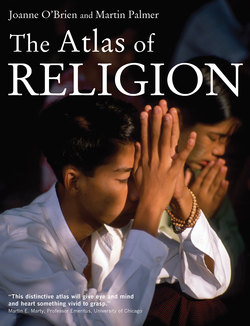Читать книгу The Atlas of Religion - Joanne O'Brien - Страница 14
ОглавлениеWhile 80 percent of people worldwide profess some religious allegiance, what this means differs from country to country and even from religion to religion. In Islam, the notion that religion is separate from daily life is unthinkable: it is a way of life rather than a faith. Similarly, Hindus see what they believe as being how they live. There is no sense of one set of beliefs for everyday life and another for religious life. In fact, Hinduism as a term of reference to a ‘religion’ is an external creation: the name was introduced by the Persians to describe all beliefs in India – across the River Indus. Judaism is also particular, since it is both a way of life and an ethnic identity – though not always linked to religious belief or practice. For many people, religious identity goes hand in hand with ethnic, social and cultural identity. Thus, questions about how much a religion is practised are not appropriate to Indonesia, for example, nor to large swathes of Africa,
South America or even China. For many people, religion is not a choice. They are born into a given set of values and beliefs. Unless some major trauma shakes them or they move right away from their own culture, the religion of their birth remains lifelong. This pattern can be disturbed. Certain religions and new religious movements are committed to conversion, and the arrival of missionaries can change religious allegiance. In areas where religions are expanding quickly – notably in Eastern Europe and Africa – religious commitment often carries with it powerful social, political and ethnic identity.
